Abstract
The influence of sodium concentration and osmolality on net water and monovalent electrolyte absorption from or secretion into the intact human colon was studied in healthy volunteers.
When isotonic solutions containing NaCl and/or mannitol were infused into the colon: (a) a direct linear relationship between luminal sodium concentration (in the range of 23-150 mEq/liter) and rate of net water, sodium, and chloride absorption was found. No water absorption was found when sodium concentration in the luminal fluid was below 20 mEq/liter; (b) water and sodium absorption from the isotonic test solutions was not enhanced by addition of 80-250 mg/100 ml of glucose; and (c) the rate of water and sodium absorption was decreased markedly when chloride was replaced by bicarbonate in the test solution.
When the colon was perfused with hypertonic test solutions containing NaCl and mannitol or urea: (a) water was absorbed from hypertonic NaCl solutions against a lumen-to-blood osmotic gradient of 50 mOsm/kg; (b) when the osmolality of the mannitol solution was increased, water entered the colonic lumen at a more rapid rate. The relationship between the rate of water entering the colon and the osmolality of the test solution was a parabolic one; (c) sodium and chloride entered the colonic lumen at a rate that was lineraly related to that of water entrance when the lumen-to-blood osmotic gradient exceeded 150 mOsm/kg; (d) water flow into the colonic lumen was identical when equimolar urea or mannitol solutions were infused; (e) neither urea nor mannitol was absorbed in significant amounts from the hypertonic solutions; and (f) our results suggest that the equivalent pore radius of the human colon is smaller than the molecular radius of urea (2.3 A).
Full text
PDF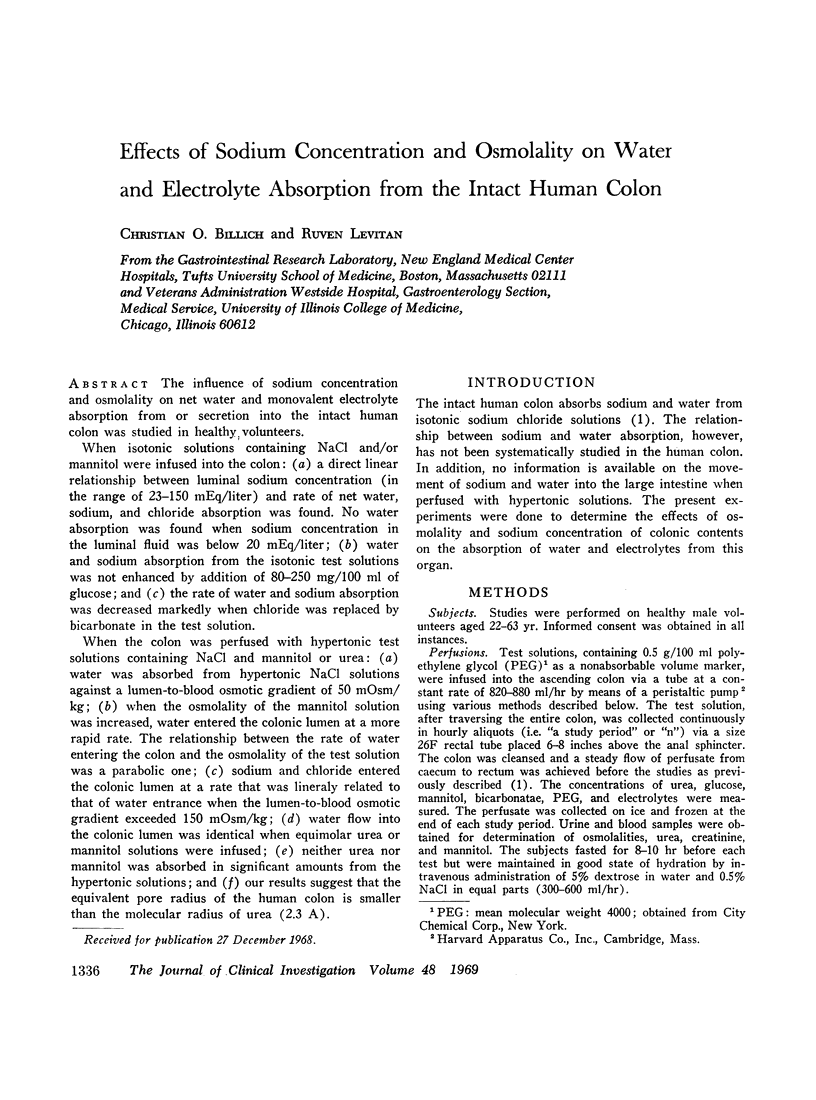
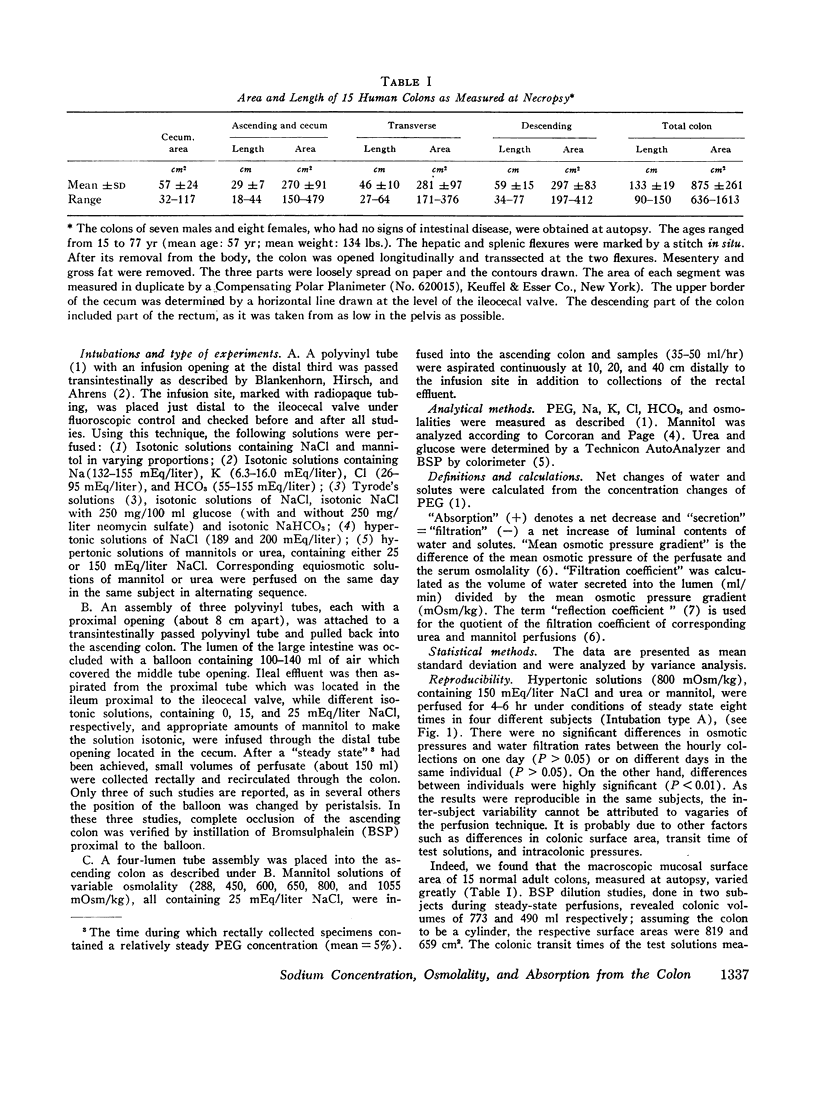
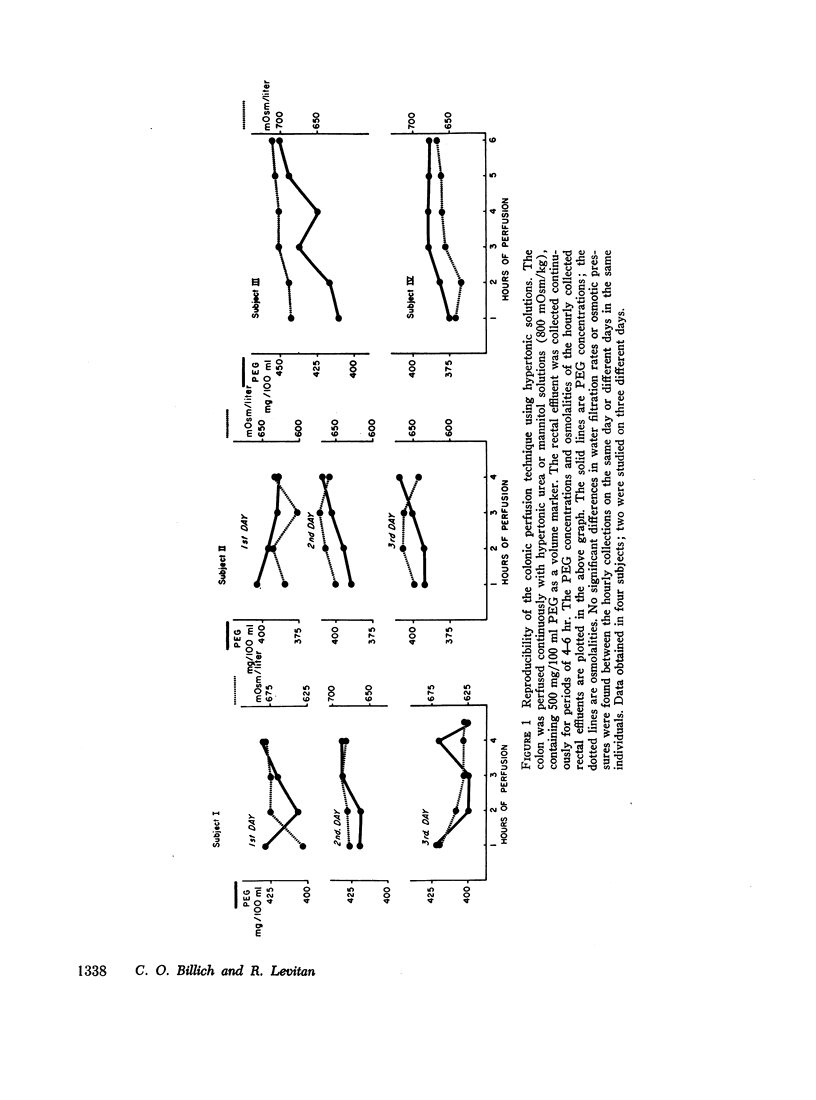
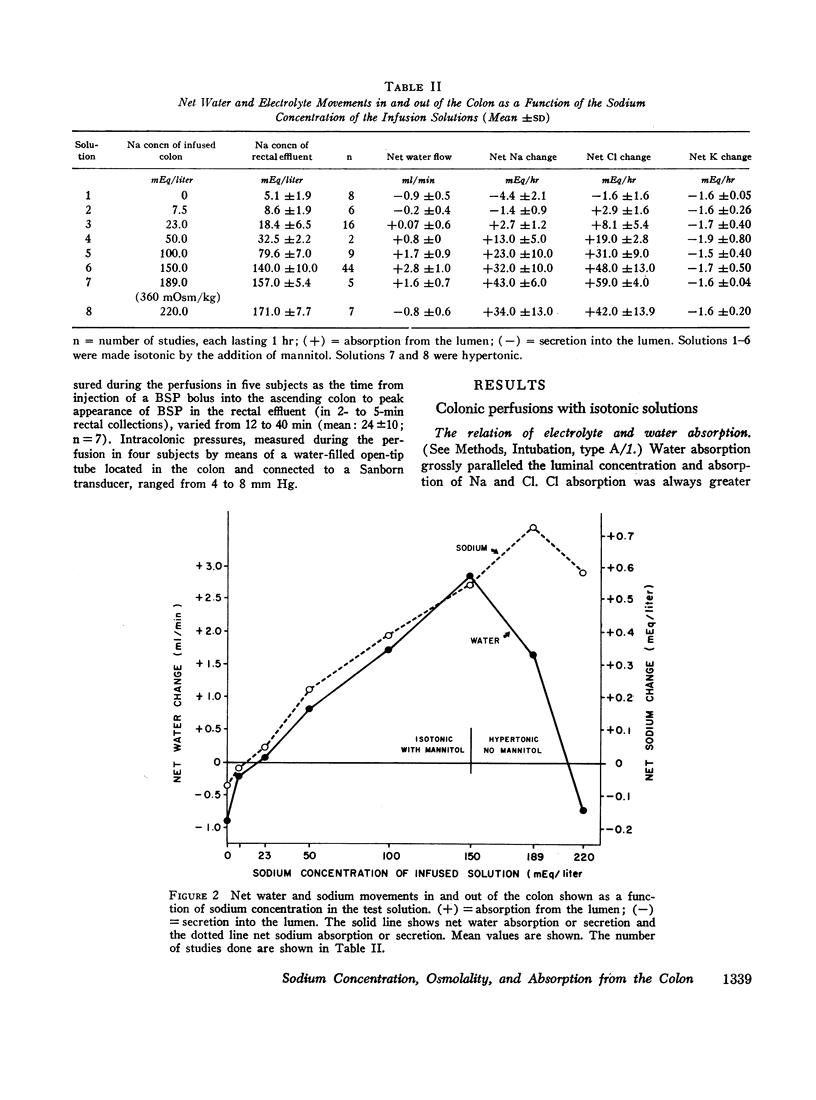
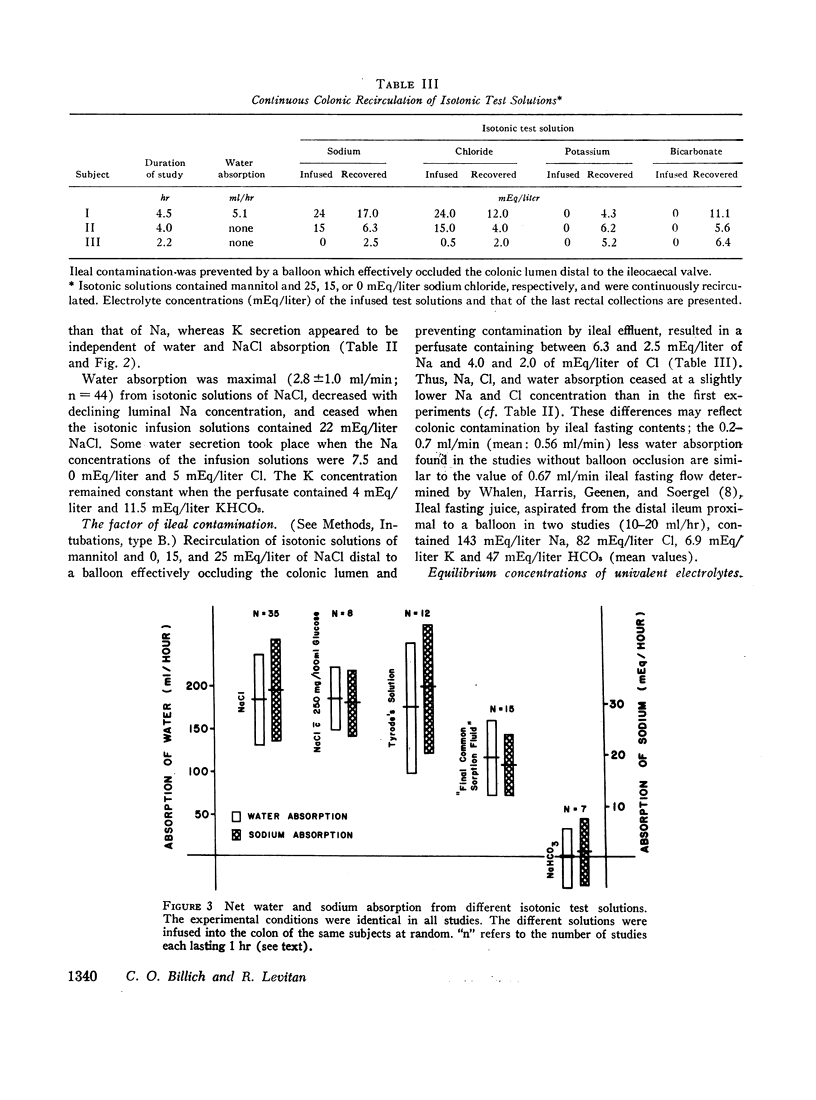
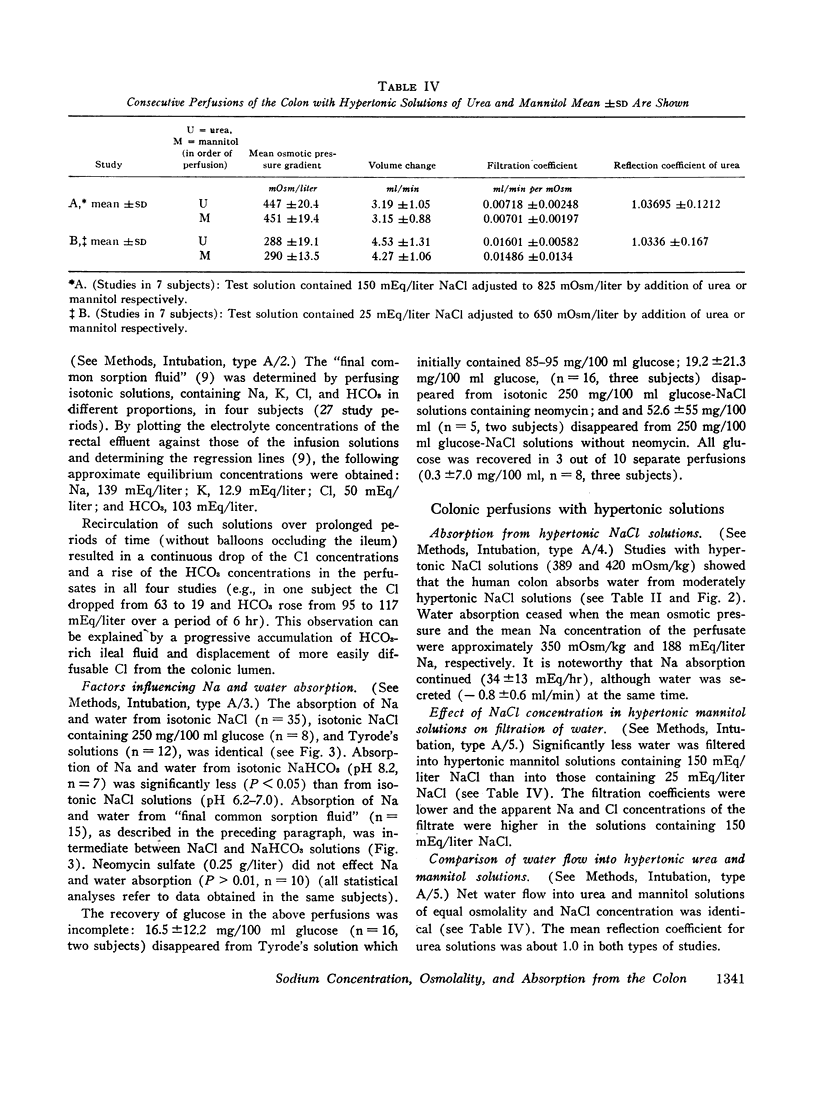
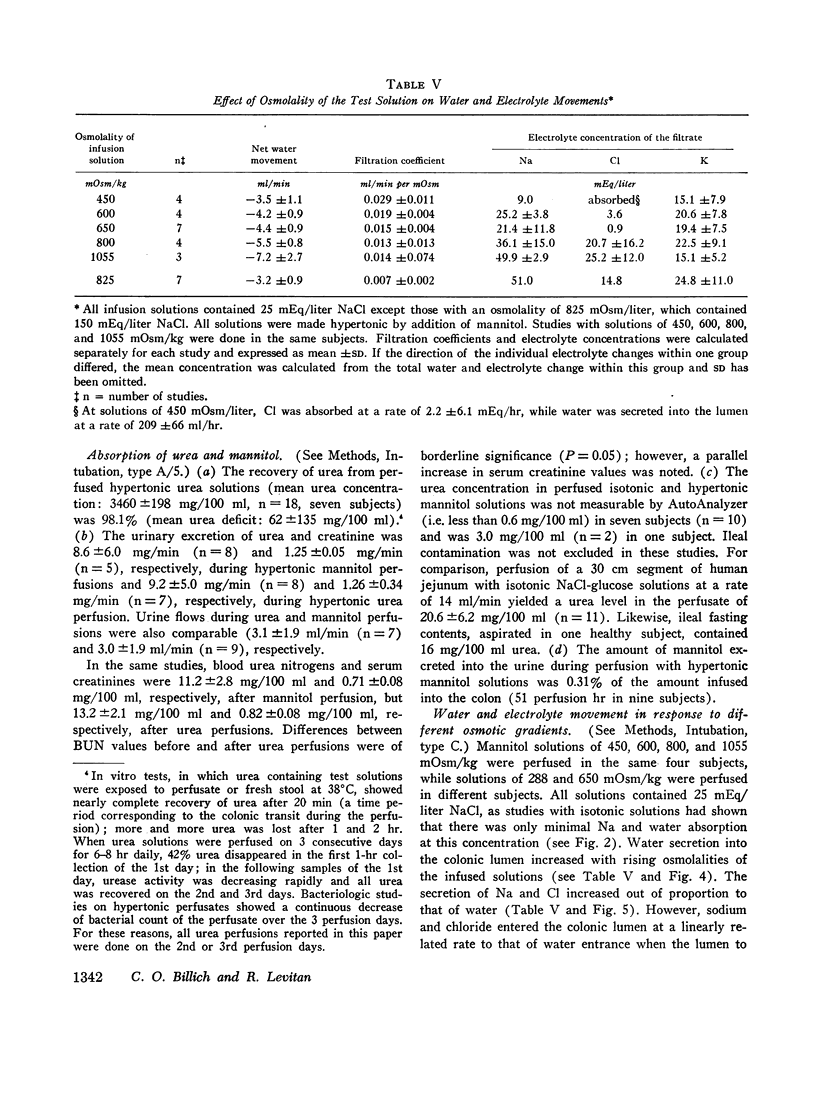
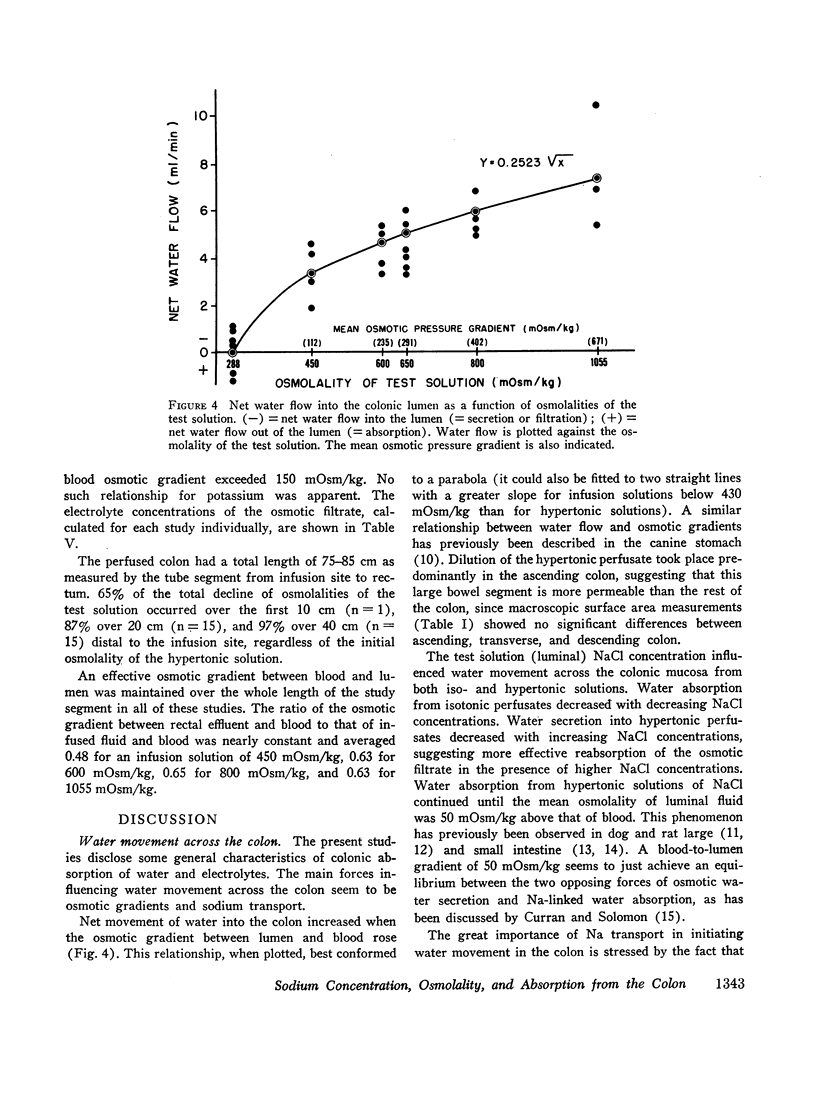
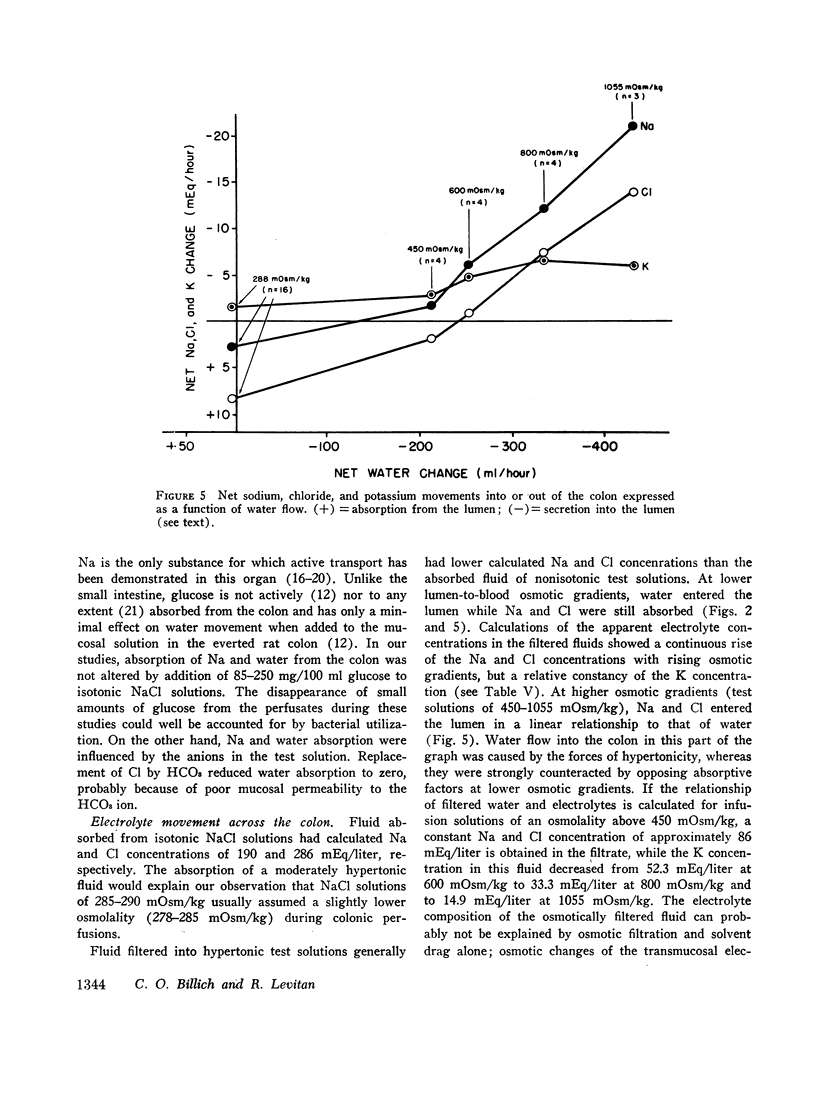
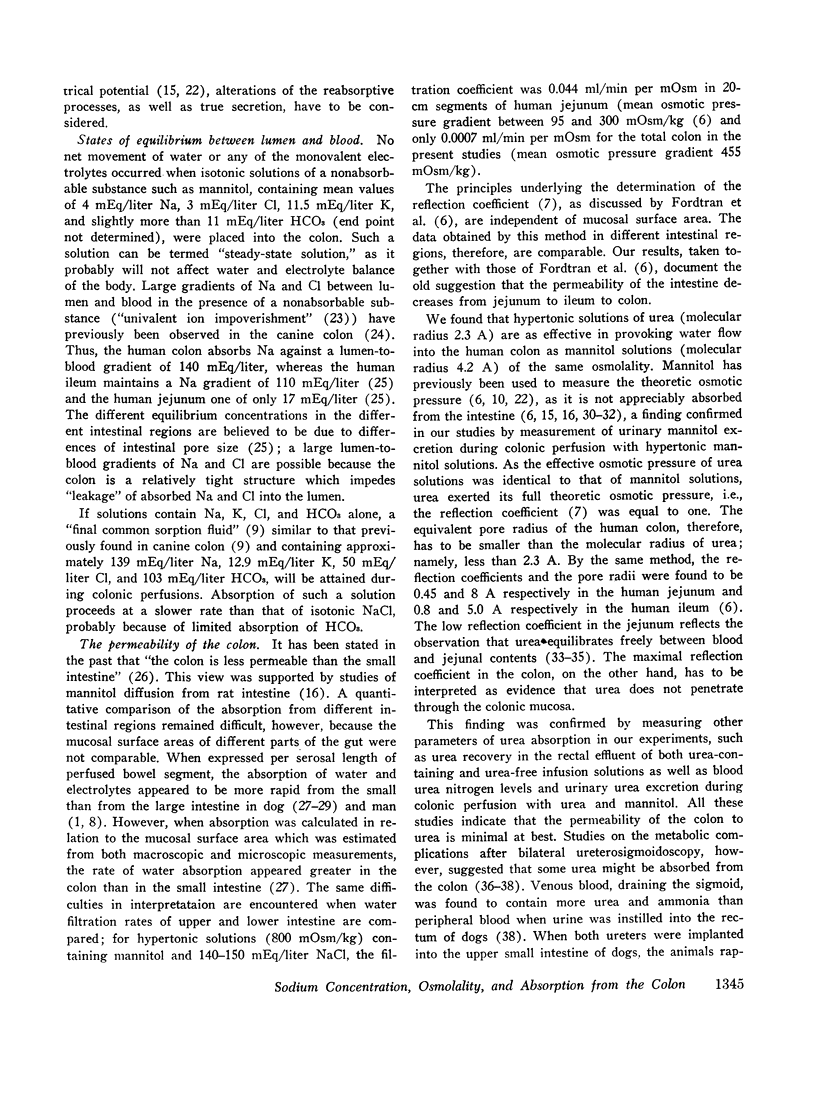
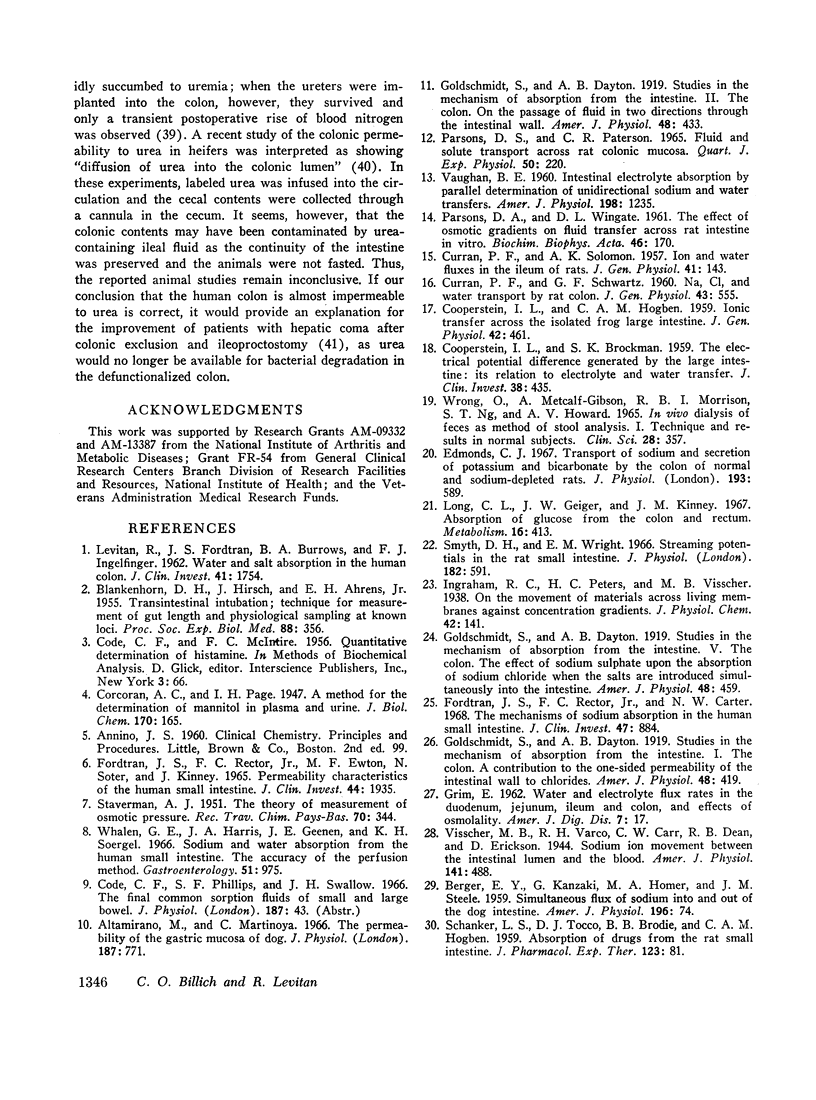
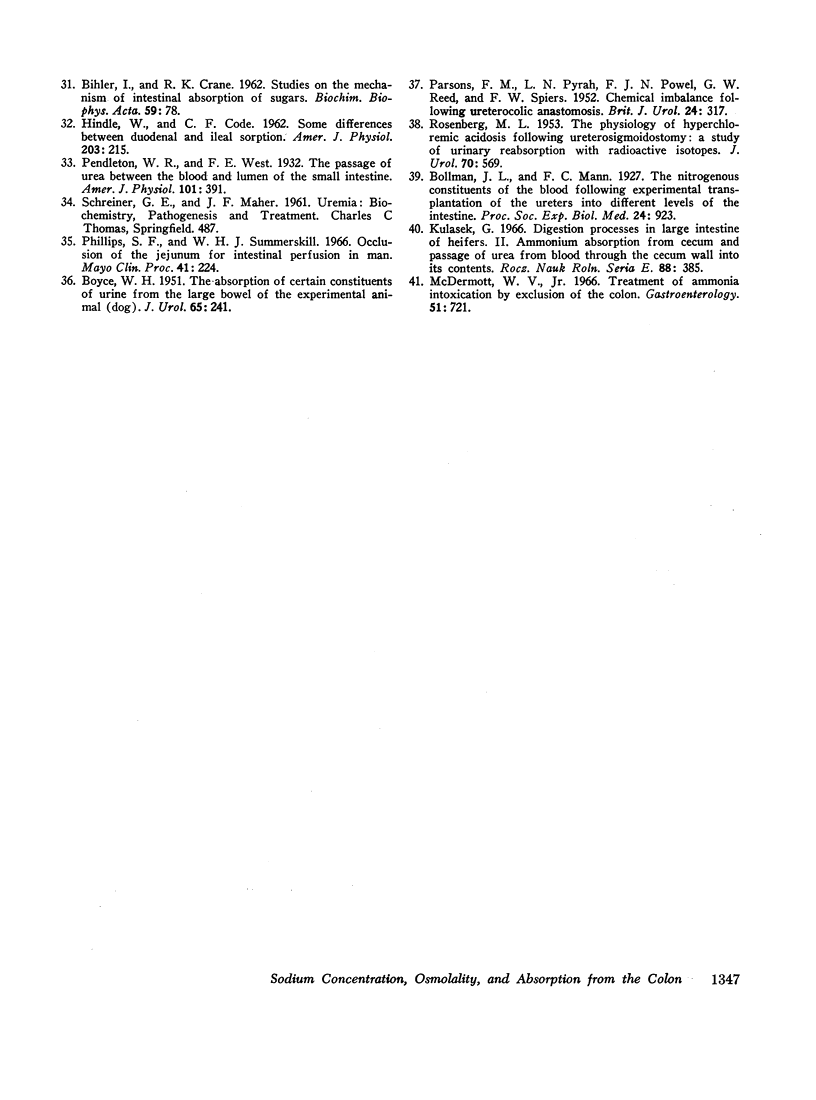
Selected References
These references are in PubMed. This may not be the complete list of references from this article.
- Altamirano M., Martinoya C. The permeability of the gastric mucosa of dog. J Physiol. 1966 Jun;184(4):771–790. doi: 10.1113/jphysiol.1966.sp007947. [DOI] [PMC free article] [PubMed] [Google Scholar]
- BERGER E. Y., KANZAKI G., HOMER M. A., STEELE J. M. Simultaneous flux of sodium into and out of the dog intestine. Am J Physiol. 1959 Jan;196(1):74–82. doi: 10.1152/ajplegacy.1958.196.1.74. [DOI] [PubMed] [Google Scholar]
- BIHLER I., CRANE R. K. Studies on the mechanism of intestinal absorption of sugars. V. The influence of several cations and anions on the active transport of sugars, in vitro, by various preparations of hamster small intestine. Biochim Biophys Acta. 1962 May 7;59:78–93. doi: 10.1016/0006-3002(62)90699-6. [DOI] [PubMed] [Google Scholar]
- BLANKENHORN D. H., HIRSCH J., AHRENS E. H., Jr Transintestinal intubation: technic for measurement of gut length and physiologic sampling at known loci. Proc Soc Exp Biol Med. 1955 Mar;88(3):356–362. doi: 10.3181/00379727-88-21588. [DOI] [PubMed] [Google Scholar]
- BOYCE W. H. The absorption of certain constituents of urine from the large bowel of the experimental animal (dog). J Urol. 1951 Feb;65(2):241–263. doi: 10.1016/S0022-5347(17)68480-5. [DOI] [PubMed] [Google Scholar]
- COOPERSTEIN I. L., BROCKMAN S. K. The electrical potential difference generated by the large intestine: its relation to electrolyte and water transfer. J Clin Invest. 1959 Feb;38(2):435–442. doi: 10.1172/JCI103818. [DOI] [PMC free article] [PubMed] [Google Scholar]
- COOPERSTEIN I. L., HOGBEN C. A. Ionic transfer across the isolated frog large intestine. J Gen Physiol. 1959 Jan 20;42(3):461–473. doi: 10.1085/jgp.42.3.461. [DOI] [PMC free article] [PubMed] [Google Scholar]
- CURRAN P. F., SCHWARTZ G. F. Na, Cl, and water transport by rat colon. J Gen Physiol. 1960 Jan;43:555–571. doi: 10.1085/jgp.43.3.555. [DOI] [PMC free article] [PubMed] [Google Scholar]
- CURRAN P. F., SOLOMON A. K. Ion and water fluxes in the ileum of rats. J Gen Physiol. 1957 Sep 20;41(1):143–168. doi: 10.1085/jgp.41.1.143. [DOI] [PMC free article] [PubMed] [Google Scholar]
- Edmonds C. J. Transport of sodium and secretion of potassium and bicarbonate by the colon of normal and sodium-depleted rats. J Physiol. 1967 Dec;193(3):589–602. doi: 10.1113/jphysiol.1967.sp008380. [DOI] [PMC free article] [PubMed] [Google Scholar]
- Fordtran J. S., Rector F. C., Jr, Carter N. W. The mechanisms of sodium absorption in the human small intestine. J Clin Invest. 1968 Apr;47(4):884–900. doi: 10.1172/JCI105781. [DOI] [PMC free article] [PubMed] [Google Scholar]
- Fordtran J. S., Rector F. C., Jr, Ewton M. F., Soter N., Kinney J. Permeability characteristics of the human small intestine. J Clin Invest. 1965 Dec;44(12):1935–1944. doi: 10.1172/JCI105299. [DOI] [PMC free article] [PubMed] [Google Scholar]
- GRIM E. Water and electrolyte flux rates in the duodenum, jejunum, ileum and colon, and effects of osmolarity. Am J Dig Dis. 1962 Jan;7:17–27. doi: 10.1007/BF02231926. [DOI] [PubMed] [Google Scholar]
- HINDLE W., CODE C. F. Some differences between duodenal and ileal sorption. Am J Physiol. 1962 Aug;203:215–220. doi: 10.1152/ajplegacy.1962.203.2.215. [DOI] [PubMed] [Google Scholar]
- LEVITAN R., FORDTRAN J. S., BURROWS B. A., INGELFINGER F. J. Water and salt absorption in the human colon. J Clin Invest. 1962 Sep;41:1754–1759. doi: 10.1172/JCI104634. [DOI] [PMC free article] [PubMed] [Google Scholar]
- Long C. L., Geiger J. W., Kinney J. M. Absorption of glucose from the colon and rectum. Metabolism. 1967 May;16(5):413–418. doi: 10.1016/0026-0495(67)90132-1. [DOI] [PubMed] [Google Scholar]
- McDermott W. V., Jr Treatment of ammonia intoxication by exclusion of the colon. Gastroenterology. 1966 Nov;51(5):721–723. [PubMed] [Google Scholar]
- PARSONS D. S., PATERSON C. R. FLUID AND SOLUTE TRANSPORT ACROSS FAT COLONIC MUCOSA. Q J Exp Physiol Cogn Med Sci. 1965 Apr;50:220–231. doi: 10.1113/expphysiol.1965.sp001784. [DOI] [PubMed] [Google Scholar]
- PARSONS D. S., WINGATE D. L. The effect of osmotic gradients on fluid transfer across rat intestine in vitro. Biochim Biophys Acta. 1961 Jan 1;46:170–183. doi: 10.1016/0006-3002(61)90660-6. [DOI] [PubMed] [Google Scholar]
- PARSONS F. M., PYRAH L. N., POWELL F. J. N., REED G. W., SPIERS F. W. Chemical imbalance following ureterocolic anastomosis. Br J Urol. 1952 Dec;24(4):317–322. doi: 10.1111/j.1464-410x.1952.tb06165.x. [DOI] [PubMed] [Google Scholar]
- Phillips S. F., Summerskill W. H. Occlusion of the jejunum for intestinal perfusion in man. Mayo Clin Proc. 1966 Apr;41(4):224–231. [PubMed] [Google Scholar]
- ROSENBERG M. L. The physiology of hyperchloremic acidosis following ureterosigmoidostomy: a study of urinary reabsorption with radioactive isotopes. J Urol. 1953 Oct;70(4):569–580. doi: 10.1016/S0022-5347(17)67953-9. [DOI] [PubMed] [Google Scholar]
- SCHANKER L. S., TOCCO D. J., BRODIE B. B., HOGBEN C. A. Absorption of drugs from the rat small intestine. J Pharmacol Exp Ther. 1958 May;123(1):81–88. [PubMed] [Google Scholar]
- Smyth D. H., Wright E. M. Streaming potentials in the rat small intestine. J Physiol. 1966 Feb;182(3):591–602. doi: 10.1113/jphysiol.1966.sp007839. [DOI] [PMC free article] [PubMed] [Google Scholar]
- VAUGHAN B. E. Intestinal electrolyte absorption by parallel determination of unidirectional sodium and water transfers. Am J Physiol. 1960 Jun;198:1235–1244. doi: 10.1152/ajplegacy.1960.198.6.1235. [DOI] [PubMed] [Google Scholar]
- WRONG O., METCALFE-GIBSON A., MORRISON R. B., NG S. T., HOWARD A. V. IN VIVO DIALYSIS OF FAECES AS A METHOD OF STOOL ANALYSIS. I. TECHNIQUE AND RESULTS IN NORMAL SUBJECTS. Clin Sci. 1965 Apr;28:357–375. [PubMed] [Google Scholar]
- Whalen G. E., Harris J. A., Geenen J. E., Soergel K. H. Sodium and water absorption from the human small intestine. The accuracy of the perfusion method. Gastroenterology. 1966 Dec;51(6):975–984. [PubMed] [Google Scholar]


